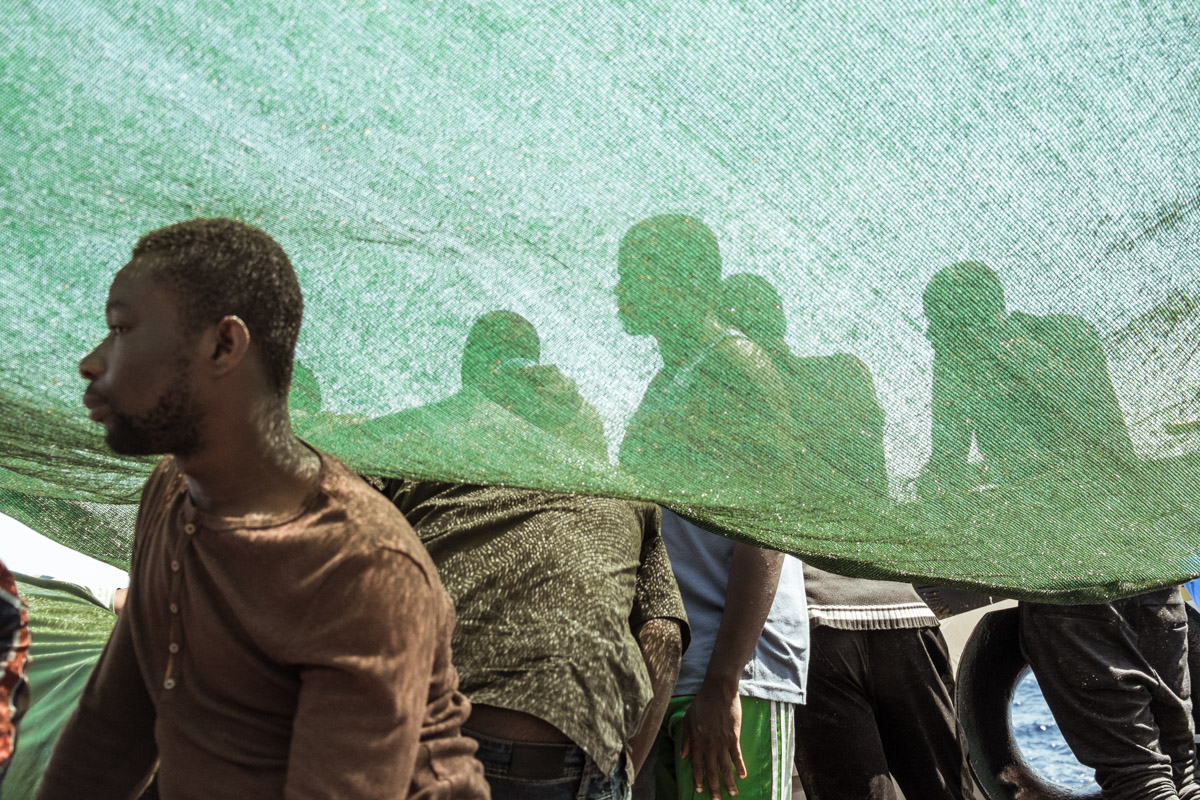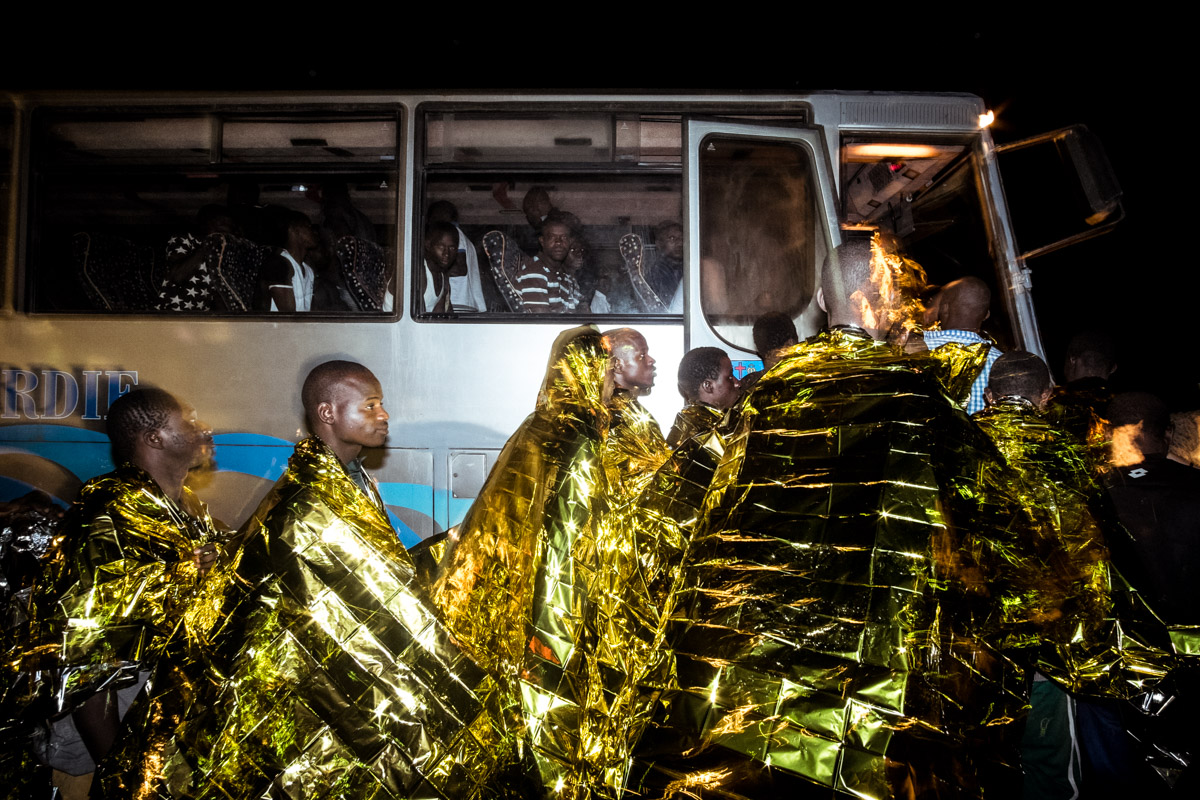A long-term work on the human consequences of the European refugee crisis
Life after Hell [2017]
Through a collective narration made of portraits, testimonies and daily life insights gathered at various reception centres across Italy, ’Life after hell' tells the story of refugees who faced the horror during their journey and fled the Libyan hell to build a new life elsewhere.
In Between [2016-2017]
A reportage from the humanitarian rescue vessel Aquarius. According to the IOM (International Organization for Migration), between Jan 2014 and Oct 2017 an average of 8 people a day have lost their lives in the Mediterranean while trying to reach Italy. It is the most lethal migration route in the world: more than 10,000 deaths in less than 3 years.
A day in Lampedusa [2016]
On this strategically placed, highly militarized island, the 6,000 inhabitants coexisted in recent years with several immigration waves from North Africa, and with more than 100,000 tourists per season. And if the fishermen have become hoteliers and the island has become for many a sought-after resort, for many others it remains a lifeboat at sea, a fortress, a mirage of Europe.
We are not going back [2015]
In June 2015, at the peak of the European refugee crisis, the flow of migrants reaching Italy by boat and headed overland for northern Europe is interrupted by the closure of the French border. Within a few days, near the Italian border town of Ventimiglia, a crowd of 200-300 migrants is formed.
Along the Balkan Route [2015]
In September 2015, after the construction of a fence between Hungary and Serbia, the flow of migrants travelling on the Balkan Route headed for Austria to reach Germany is forced to divert its course. During the frantic weeks following, the governments of Croatia, Slovenia and Hungary repeatedly change their policy, opening and closing borders from one day to another.




